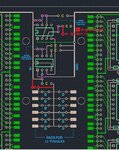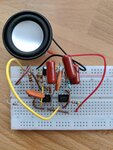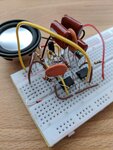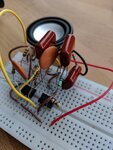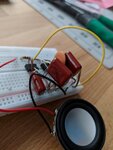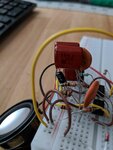skarkowtsky
Advanced Member level 4

Hi guys,
I just followed both of your photos to the T, and nothing. D, I haven't changed any components, if anything, I replaced some with the right values. I also noticed you added capacitors to both pin 8s and the first pin 4 that I don't see on your schematics, my trace diagram, or Brain's breadboard. So, this continues to confuse me, and I don't know if my trace diagram is correct anymore. I see some capacitors going to ground that on my diagram are not. though I think you said the diagram looked good. But to me, it differs than your breadboards. So, I'm confused.
No sound whatsoever, I'm about to smash this circuit against my bench.
I just followed both of your photos to the T, and nothing. D, I haven't changed any components, if anything, I replaced some with the right values. I also noticed you added capacitors to both pin 8s and the first pin 4 that I don't see on your schematics, my trace diagram, or Brain's breadboard. So, this continues to confuse me, and I don't know if my trace diagram is correct anymore. I see some capacitors going to ground that on my diagram are not. though I think you said the diagram looked good. But to me, it differs than your breadboards. So, I'm confused.
No sound whatsoever, I'm about to smash this circuit against my bench.
Last edited:


